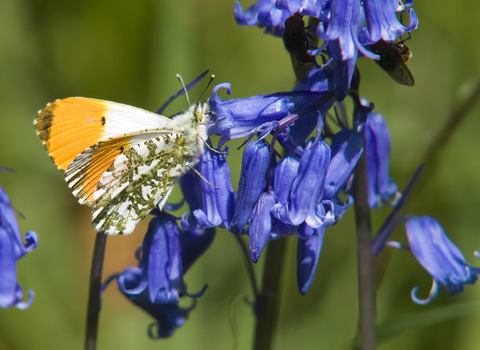
Orange-tip ©Bob Coyle

©Ross Hoddinott/2020VISION
Orange-tip
It’s easy to see where these butterflies get their name – the males have bright orange tips on their wings! See them from early spring through to summer in meadows, woodland and hedges.
